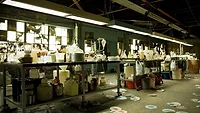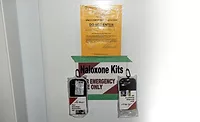Meth Lab Cleanup: Strip, Scrub, Repeat
Decontaminating a Former Meth House
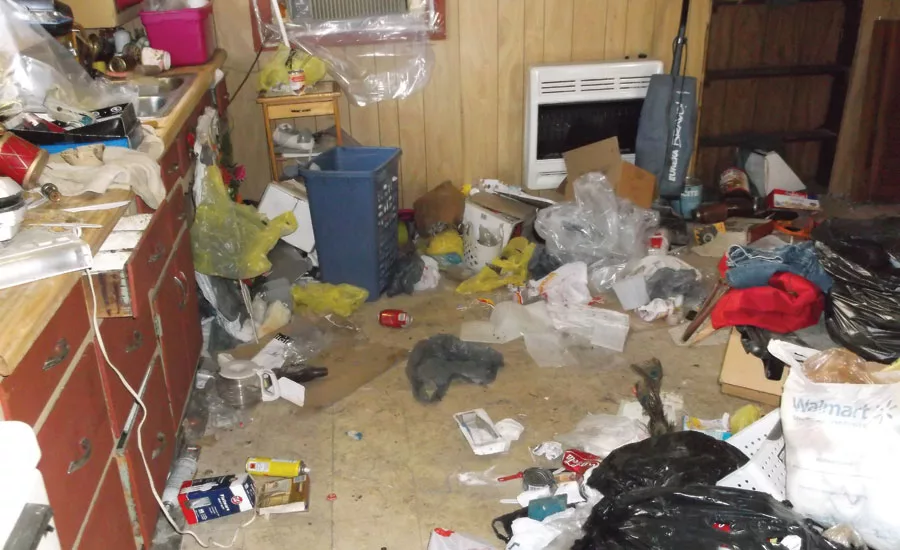
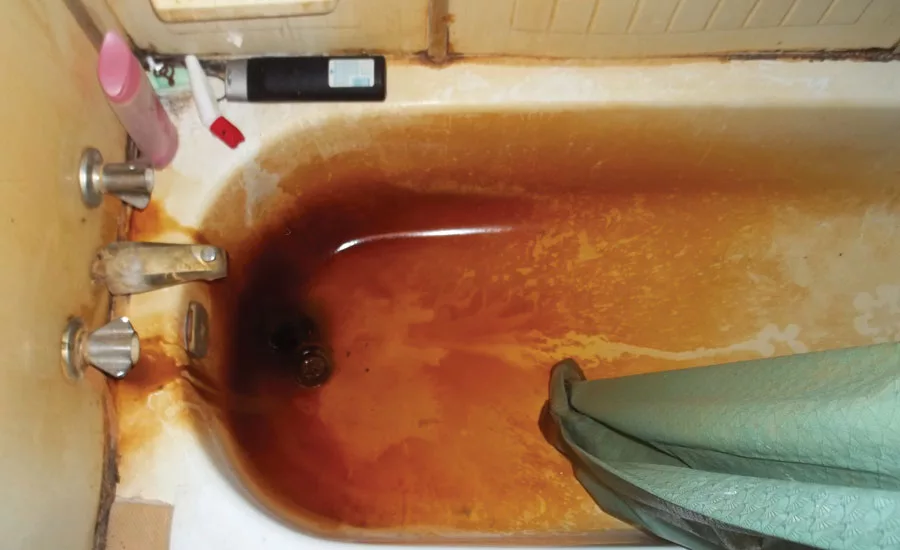
Check out the color of this bathtub needing a thorough cleaning after a meth lab in the home. Photo courtesy of Crisis Cleaning.
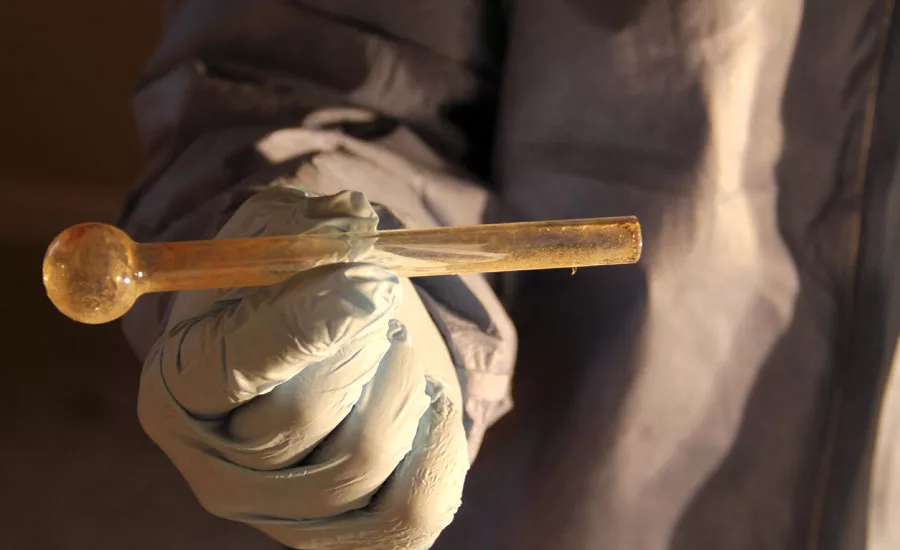
Normally, police remove all the evidence of drugs from a home before the remediation crew comes in. However, sometimes items are missed – like this
meth pipe. Photo courtesy of Crisis Cleaning.
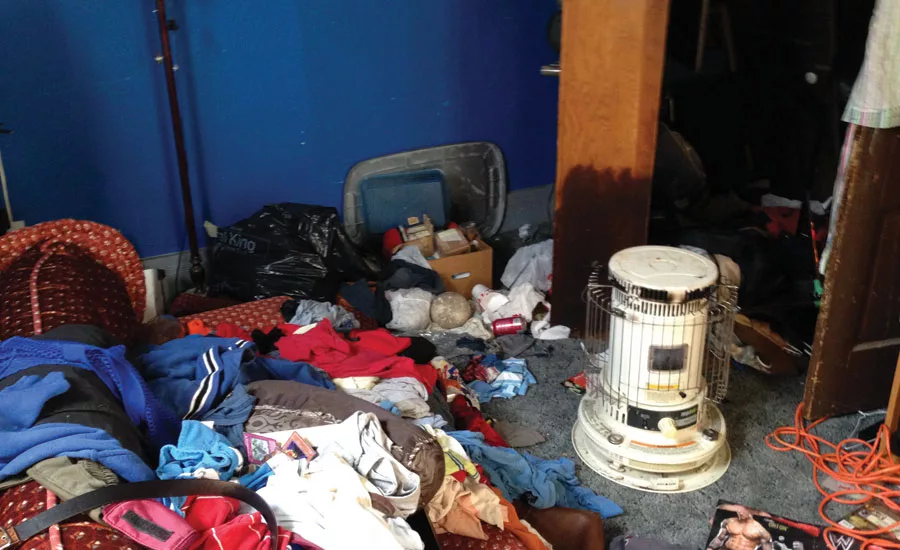
Sometimes, drug house cleanup jobs start more like hoarding cleanup. All this needs to be thrown away before decontamination can begin. Photo courtesy of Crisis Cleaning.
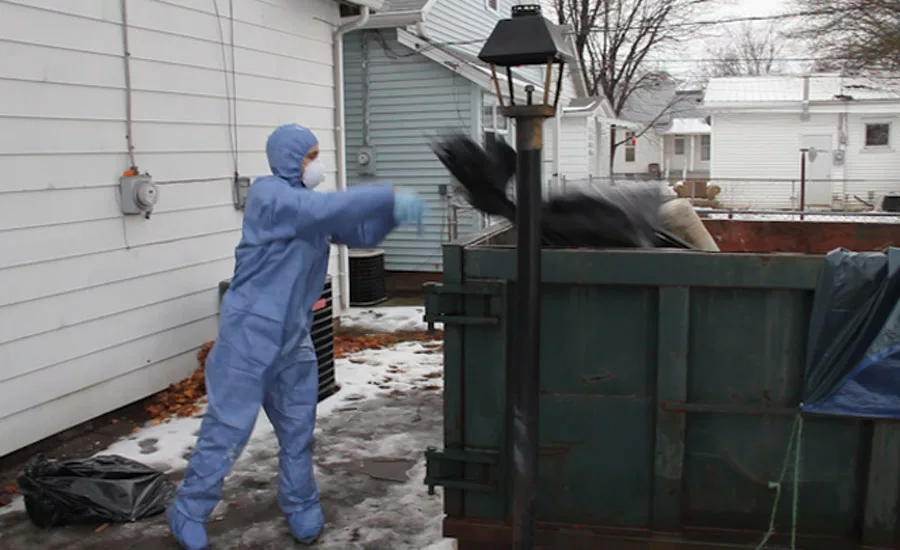
Any soft, porous materials in a meth house are stripped out and thrown away. Photo courtesy of Crisis Cleaning.
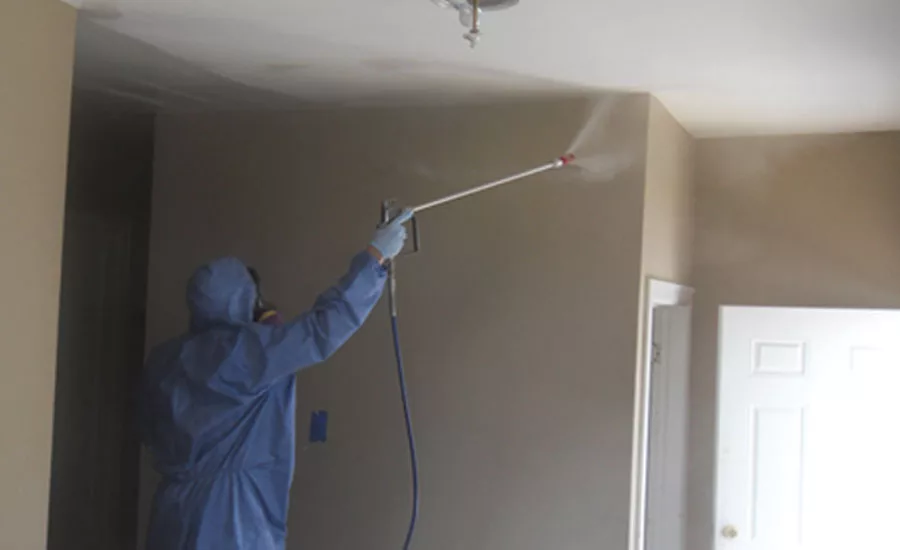
It’s important to use a product for meth decontamination that will truly breakdown and get rid of the chemical buildup meth leaves behind. Photo courtesy of Crisis Cleaning.
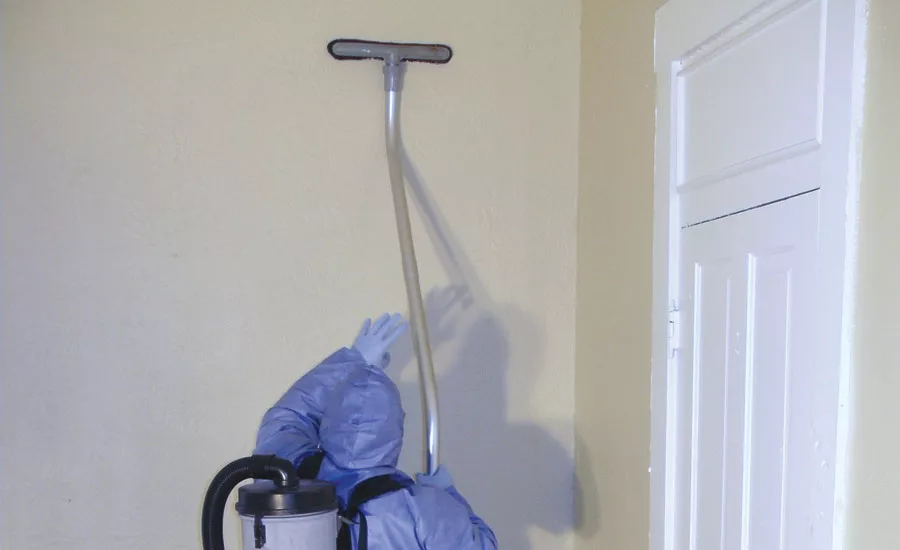
After the home is tested, and a scope for the work set, crews HEPA vacuum every square inch to get rid of any dust and debris and create a clean surface to start decontamination. Photo courtesy of Crisis Cleaning.
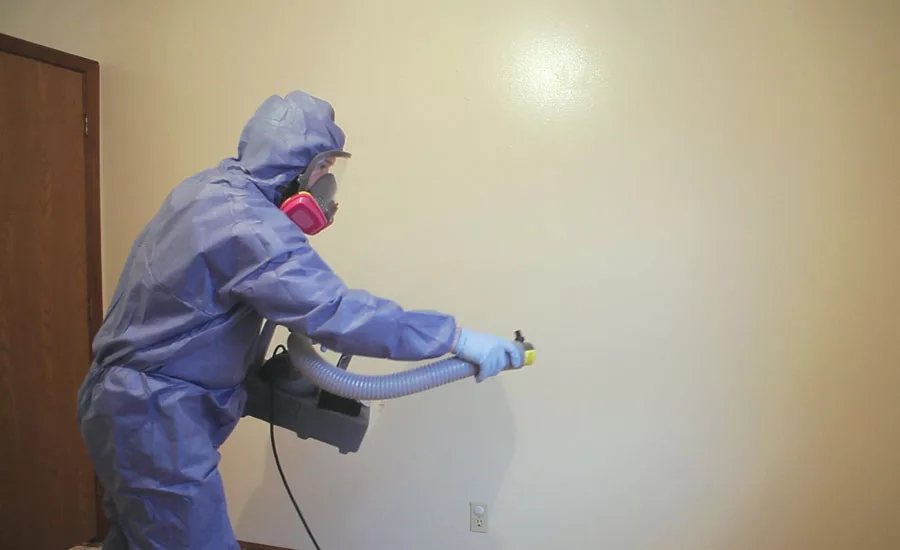
Once the home is stripped and HEPA-vacuumed, the cleaning and fogging process begins. Photo courtesy of Crisis Cleaning.
Donetta Held is someone many would consider a pioneer in proper meth remediation techniques. Meth decontamination carries a unique set of challenges restoration companies would not likely face on a traditional fire, flood, mold, or other job.
Held grew up in the construction and restoration industry. Her grandfather started English Construction in 1955, today it is owned by her father. The company does both catastrophe cleanup and construction, and it was while working for her father that she was trained in crime scene cleanup, and her interest grew from there. In 2001, Held started Crisis Cleaning as a sister company to English Construction.
Understanding the Laws
Every state has very different laws regarding the proper way to clean up after a meth cook in a home, vehicle, or elsewhere. Some states have stringent rules and air quality guidelines; others have none leaving it acceptable for homeowners to try to clean up after the lab on their own, and turn the home over to new, unsuspecting tenants who could then be exposed to the noxious chemicals a meth cook leaves behind.
So, if you offer meth lab cleanup, or are considering adding it to your service offerings, be sure to do your homework first. Held has certainly done hers.
Indiana’s Strict Meth Code
In 2007, Indiana enacted laws regarding meth cleanup procedures. Crisis Cleaning was one of the first companies in the state to be certified by the Indiana Dept. of Environmental Management to do meth lab cleanup. According to the U.S. Drug Enforcement Administration, Indiana leads the country in the number of meth busts. In fact, in 2014, there were 9,338 meth busts nationwide; 1,471 or 16 percent of that total were in Indiana.
“In Indiana, if police bust a meth lab in a home or rental property, they are required to notify the local health department in that county,” Held explained. “Then, the health department shuts down the home and condemns it until it is tested and proven to be safe and sends a letter to the owner.”
That test in Indiana is strict; it’s 0.5 parts meth per 100 square centimeters. That number can differ greatly from state-to-state. For example, California allows 1.5 parts meth per 100 square centimeter.
Held said Utah, Tennessee, Kentucky and some other states have similar laws to Indiana’s. However, other states like Michigan simply have guidelines; others like Illinois and Ohio do not have laws.
It was when Indiana enacted these laws that Held added meth lab cleanup to her services. She said she was at the Indiana Sheriff’s Conference and asked by sheriff after sheriff from counties all over the state if they offered meth cleanup.
“Of all the environmental services we provide, meth is number one, we get the most calls for that,” Held said. “We even get it in high-dollar cities. We are finding them in high-dollar homes, along with rural areas.”
Step 1: Establishing a Scope
“We recommend testing every room in the property first,” Held said. “If they only cooked meth in the basement, and it didn’t filter upstairs and the levels upstairs are low, then we can save them on the decontamination because we only have to take care of the basement and not the upstairs.”
Plus, once the decontamination process is complete, Held’s team only has to retest the areas where levels were above the acceptable limit instead of testing the whole home.
Step 2: Strip out Porous Materials
“If a home needs decontamination, we first have to dispose of everything that cannot be properly decontaminated,” Held explained. “We are talking porous items like carpet, padding, window blinds that may be hard to clean, a range hood or exhaust vents in a bathroom.”
Sometimes, entire duct systems have to be thrown out too. Held said some of the flexible ducting gets meth residue trapped, and is difficult to clean. However, she does have a machine to clean metal ducts and the furnace thoroughly. The furnace generally needs to be completely taken apart and cleaned stem to stern.
Step 3: Decontaminate & Clean
“We HEPA vac every square inch of the property; you have to start with a clean surface. Then, we apply our chemical,” Held explained.
Choosing a chemical for meth cleanup is important. Many restoration products out there are designed to disinfect, however meth is a different animal because it leaves a chemical residue.
“The residue from meth is all chemicals. They are smoking and cooking chemicals, and it is leaving all that residue on every surface. We use a product that is designed to breakdown and neutralize all of that.”
Step 4: Retest
Sometimes the levels are high enough in a meth house that you have to clean surfaces many, many times. Held said they have had sky-high levels into the double digits. The only way to know a home is truly decontaminated is by testing. Unlike smoke damage residue from a fire, meth residue is generally unseen, but still present.
Safety & Cleaning Equipment
“We look like blue smurfs,” Held joked. “You have to wear a full-face respirator with cartridges, full suits and hoods, foot coverings, and double gloves.”
Held said they also have different equipment for different types of jobs. So, their meth equipment is strictly used for meth jobs, asbestos for asbestos, lead for lead, etc. All of the equipment is also thoroughly cleaned after every job so it is ready for the next.
There is also real-world dangers of cleaning up drug houses, so Held and all of her crew have handgun permits. Her husband is even considering getting a dog to bring to job sites.
She shared stories of druggies showing up looking for more meth, booby traps being set by paranoid meth addicts, and even nails buried in a driveway leading up to a meth house that punctured the team’s tires.
Who Foots the Bill?
In many instances it is up to the homeowner to come up with the money for the cleaning and testing. Held estimates just 30 to 40 percent of the work is covered by insurance; the rest is private pay.
Her advice: never buy or rent a home without testing for meth contamination, first. And, if you are going to get into the meth lab cleanup business, get properly trained and do your homework. Know your state’s laws, and how to clean a property the right way.
Looking for a reprint of this article?
From high-res PDFs to custom plaques, order your copy today!




